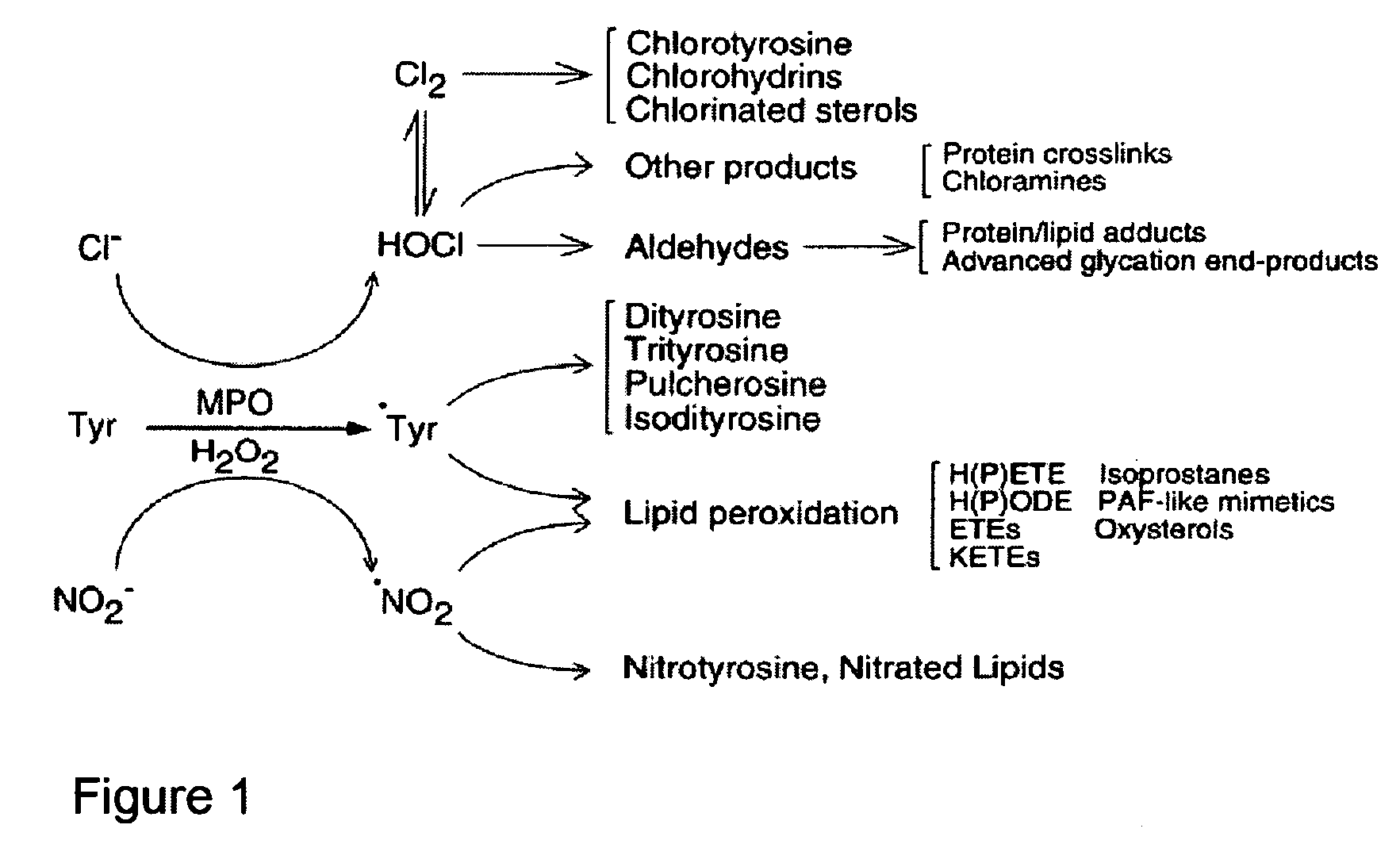Antibodies to oxidized ldl
a technology of oxidized ldl and antibodies, which is applied in the field of antibodies to oxidized ldl, can solve the problems of inability to detect the pathology of the vessel wall, complex lesions, and inability to develop complex lesions, and achieves the clinical feasibility of non-invasive detection of atherosclerotic lesions
- Summary
- Abstract
- Description
- Claims
- Application Information
AI Technical Summary
Benefits of technology
Problems solved by technology
Method used
Image
Examples
Embodiment Construction
Introduction
[0032]The present invention is directed to the identification and use of antibodies that recognize modification epitopes on a biomolecule or biomolecular complex resulting from in vivo modification in a transgenic animal expressing a transgene. The expression of the transgene results in the in vivo modification or an increase in the level of the in vivo modification. A particularly advantageous example is the identification of antibodies recognizing naturally occurring oxidized low density lipoproteins (LDL) and / or high density lipoproteins (HDL). Thus, the following discussion will emphasize and be illustrated by anti-oxLDL antibodies, but it should be understood that antibodies having other specificities can be produced in similar manner using other transgenes which produce particular in vivo modifications.
[0033]As indicated, the method for initially generating the antibodies uses a novel animal (e.g., mouse) strain. Monoclonal antibodies can be produced by hybridoma t...
PUM
| Property | Measurement | Unit |
|---|---|---|
| Density | aaaaa | aaaaa |
Abstract
Description
Claims
Application Information
 Login to View More
Login to View More - R&D
- Intellectual Property
- Life Sciences
- Materials
- Tech Scout
- Unparalleled Data Quality
- Higher Quality Content
- 60% Fewer Hallucinations
Browse by: Latest US Patents, China's latest patents, Technical Efficacy Thesaurus, Application Domain, Technology Topic, Popular Technical Reports.
© 2025 PatSnap. All rights reserved.Legal|Privacy policy|Modern Slavery Act Transparency Statement|Sitemap|About US| Contact US: help@patsnap.com

